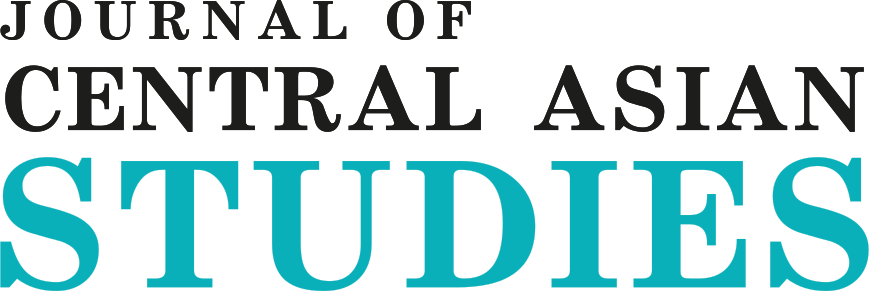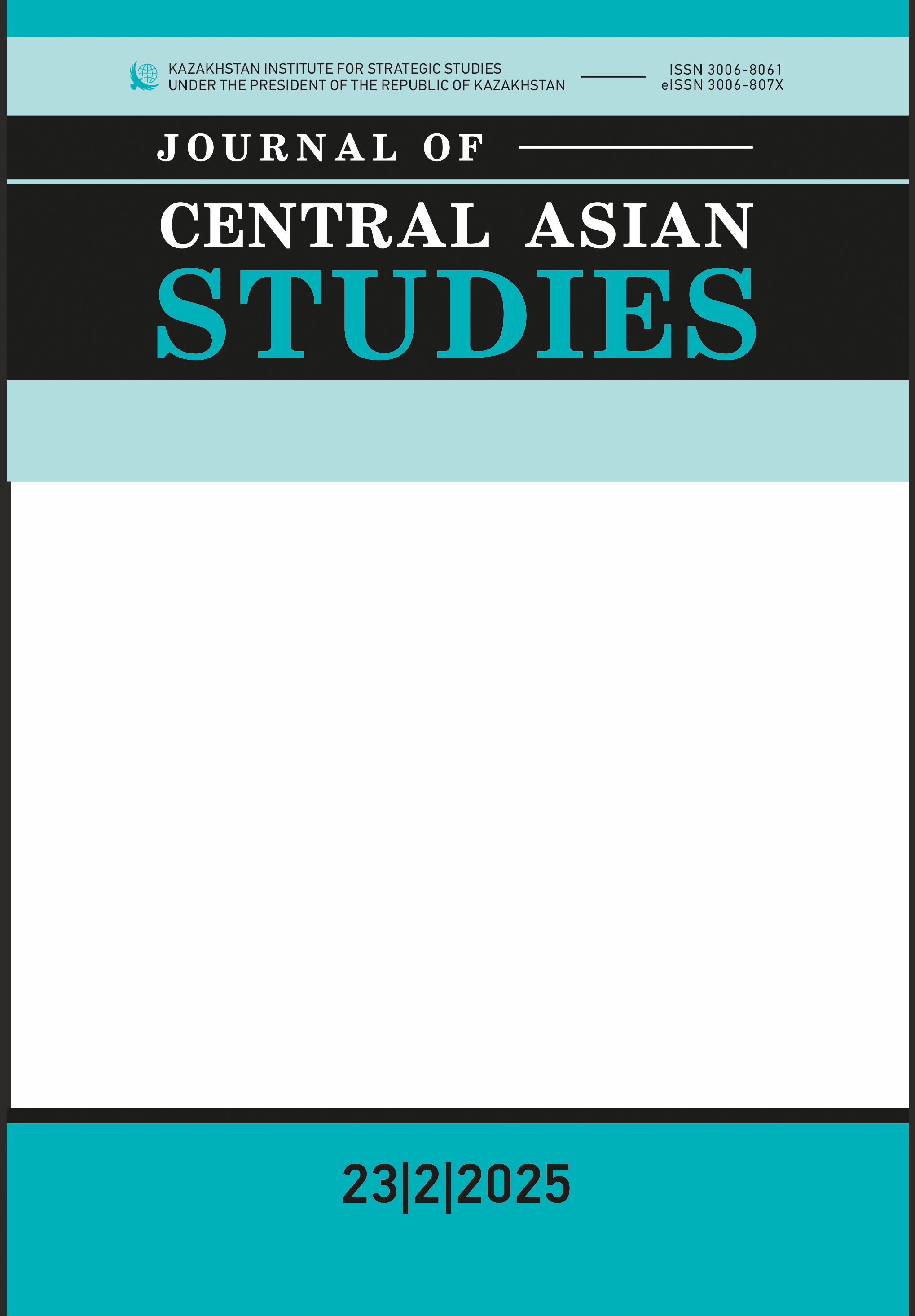Мягкая дипломатия: инструмент для продвижения стратегии США в Центральной Азии
DOI:
https://doi.org/10.52536/3006-807X.2025-2.003Ключевые слова:
мягкая сила, образовательная дипломатия, академическая мобильность, управление, геополитическое влияниеАннотация
Соединенные Штаты стратегически использовали образовательную дипломатию для влияния на Центральную Азию, используя академическое сотрудничество как инструмент мягкой силы и средство продвижения демократических ценностей. Это исследование изучает влияние образовательных программ, финансируемых США, в Казахстане, Киргизстане, Узбекистане, Таджикистане и Туркменистане, анализируя их вклад в реформу высшего образования, академическую мобильность и управление. Исследуя геополитические мотивы участия США в регионе, особенно в ответ на растущее влияние Китая и России, это исследование предоставляет обзор вызовов и устойчивости этих инициатив.
Используя научный подход с применением смешанных методов, данное исследование анализирует политические документы, оценки проектов и мнения заинтересованных сторон, чтобы сравнить инициативы в разных национальных контекстах.
Результаты показывают, что, хотя программы США улучшили образовательные системы и продвигали демократические ценности, их долгосрочная устойчивость сталкивается с политическими ограничениями, финансовой нестабильностью и конкурирующими иностранными актерами.
Библиографические ссылки
Altbach, P. G., & Knight, J. (2007). The internationalization of higher education: Motivations and realities. Journal of Studies in International Education, 11(3-4), 290–305.
Bhandari, R., & Blumenthal, P. (Eds.). (2013). International students and global mobility in higher education: National trends and new directions. Palgrave Macmillan.
Brown, L., & Jones, I. (2013). Encounters with racism and the international student experience. Studies in Higher Education, 38(7), 1004–1019.
Byrne, C., & Hall, R. (2011). Australia’s education diplomacy: International education and the development of soft power. Australian Journal of International Affairs, 65(5), 526–544.
Cantwell, B., & Maldonado-Maldonado, A. (2009). Four stories: Confronting contemporary ideas about globalisation and internationalisation in higher education. Globalisation, Societies and Education, 7(3), 289–306.
Castles, S. (2007). Migration and development: Perspectives from the South. International Organization for Migration.
Chitty, N. (2017). The Routledge handbook of soft power. Routledge.
Deardorff, D. K. (2009). Implementing intercultural competence assessment. The SAGE Handbook of Intercultural Competence, 477–491.
Findlay, A. M., King, R., Smith, F. M., Geddes, A., & Skeldon, R. (2012). World class? An investigation of globalisation, difference and international student mobility. Transactions of the Institute of British Geographers, 37(1), 118–131.
Hazelkorn, E. (2015). Rankings and the reshaping of higher education: The battle for world-class excellence. Palgrave Macmillan.
Horta, H. (2018). The impact of academic inbreeding on scientific effectiveness. Scientometrics, 114(1), 135–154.
Kaneva, N. (2012). Nation branding and public diplomacy: Challenges and opportunities. The Fletcher Forum of World Affairs, 36(3), 65–80.
Knight, J. (2004). Internationalization remodeled: Definition, approaches, and rationales. Journal of Studies in International Education, 8(1), 5–31.
Knight, J. (2015). Updating the definition of internationalization. International Higher Education, 33, 2–3.
Leask, B. (2009). Using formal and informal curricula to improve interactions between home and international students. Journal of Studies in International Education, 13(2), 205–221.
Marginson, S. (2007). Global position and position taking: The case of Australia. Journal of Studies in International Education, 11(1), 5–32.
Marginson, S. (2016). High Participation Systems of Higher Education. The Journal of Higher Education, 87(2), 243-271. https://doi.org/10.1080/00221546.2016.11777401.
McClory, J. (2018). The Soft Power 30: A global ranking of soft power. Portland Communications.
Melissen, J. (Ed.). (2005). The new public diplomacy: Soft power in international relations. Palgrave Macmillan.
Mohrman, K., Ma, W., & Baker, D. (2008). The research university in transition: The emerging global model. Higher Education Policy, 21(1), 5–27.
Nye, J. S. (1990). Bound to lead: The changing nature of American power. Basic Books.
Nye, J. S. (2004). Soft power: The means to success in world politics. PublicAffairs.
Nye, J. S. (2008). Public diplomacy and soft power. The ANNALS of the American Academy of Political and Social Science, 616(1), 94–109.
Robertson, S. L., & Dale, R. (2013). The social justice implications of privatisation in education governance frameworks. In Verger et al. (Eds.), Global education policy and international development. Bloomsbury.
Roselle, L., Miskimmon, A., & O’Loughlin, B. (2014). Strategic narrative: A new means to understand soft power. Media, War & Conflict, 7(1), 70–84.
Rumbley, L. E. (2013). Internationalization in the universities of Europe: Studies, strategies and challenges. In Global perspectives on higher education. Sense Publishers.
Sun, H. (2023). Confucius Institutes and Chinese soft power: Between controversy and communication. Journal of Contemporary China, 32(137), 18–34.
Verbik, L., & Lasanowski, V. (2007). International student mobility: Patterns and trends. World Education News & Reviews, 20(10), 1–12.
Wojciuk, A., Michałek, M., & Stormowska, M. (2015). Education as a source and tool of soft power in international relations. European Political Science, 14(3), 299–317.
Yang, R. (2010). Soft power and higher education: An examination of China’s Confucius Institutes. Globalisation, Societies and Education, 8(2), 235–245.
Zaharna, R. S. (2010). Battles to bridges: US strategic communication and public diplomacy after 9/11. Palgrave Macmillan.
Загрузки
Опубликован
Выпуск
Раздел
Лицензия
Copyright (c) 2025 Торебекова З., Бактиярова Г.

Это произведение доступно по лицензии Creative Commons «Attribution» («Атрибуция») 4.0 Всемирная.











 Open content is licensed under the CC-BY
Open content is licensed under the CC-BY 